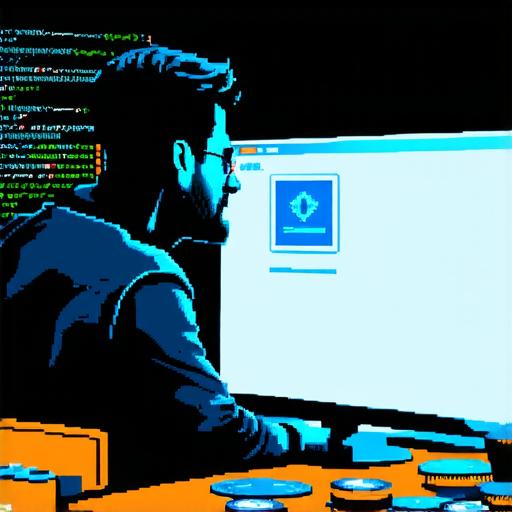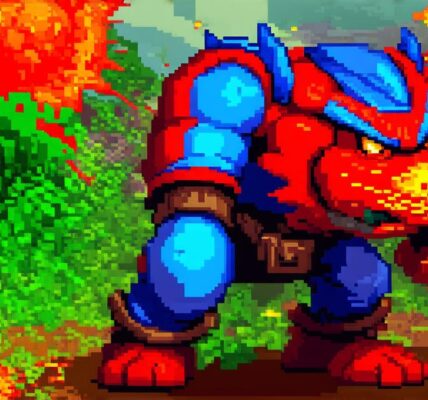Are you a video game enthusiast looking to create your own game? Look no further! In this guide, we will take you through the steps of making your own video game from scratch. We will cover everything from brainstorming ideas to coding and testing your game.
Step 1: Brainstorming Ideas
The first step in creating your own video game is to come up with an idea. This could be anything from a simple puzzle game to a complex action-adventure game. To help you brainstorm, ask yourself questions such as “What type of game do I want to make?” “Who is my target audience?” and “What unique features can I include in my game?” Once you have a clear idea in mind, move on to the next step.
Step 2: Choosing Your Game Engine
The next step is to choose your game engine. A game engine is a software framework that provides developers with pre-built tools and assets to create their games. Some popular game engines include Unity, Unreal Engine, and Construct. Each game engine has its strengths and weaknesses, so it’s important to choose one that fits your needs and skill level.
Step 3: Learning the Basics of Programming
To create a video game, you will need to learn how to code. There are several programming languages used in game development, including C++, C, Python, and JavaScript. If you’re new to programming, start with a beginner-friendly language like Python or JavaScript. Once you have a basic understanding of programming, move on to more advanced concepts such as game logic and user interfaces.
Step 4: Creating Your Game World
The next step is to create your game world. This involves designing the levels, creating assets such as characters and objects, and implementing game mechanics such as movement and combat. To create a believable game world, pay attention to details such as lighting, textures, and sound effects.
Step 5: Implementing AI and Game Logic
To make your game more engaging, you will need to implement artificial intelligence (AI) and game logic. AI involves creating intelligent characters that can react to the player’s actions, while game logic involves programming the rules and mechanics of the game. To implement AI and game logic, you will need a strong understanding of programming concepts such as algorithms and data structures.
Step 6: Testing and Debugging
Once your game is complete, it’s important to test and debug it thoroughly. This involves finding and fixing bugs, optimizing performance, and ensuring that the game is playable and enjoyable for the player. To test your game, you can use tools such as debuggers and profilers to identify and fix issues.
Step 7: Deploying Your Game
The final step in creating your own video game is to deploy it. This involves publishing your game on a platform such as Steam or the App Store. Before deploying your game, make sure that it meets the requirements of the platform and that you have the necessary licenses and permissions.
Case Study: Making a Puzzle Game with Unity
Let’s take a look at an example of how to create a puzzle game with Unity, one of the most popular game engines on the market.
Step 1: Brainstorming Ideas
To start, we came up with the idea for a simple puzzle game where the player has to solve increasingly complex mazes by collecting keys and unlocking doors.
Step 2: Choosing Your Game Engine
We chose Unity as our game engine because it’s easy to use and has a large community of developers who can provide support and assets.
Step 3: Learning the Basics of Programming
To create the game, we learned the basics of C programming language, which is used in Unity. We started with simple concepts such as variables, loops, and functions.
Step 4: Creating Your Game World
We created the game world by designing the mazes and implementing the rules for collecting keys and unlocking doors. We also created assets such as walls, doors, and keys using Unity’s built-in tools.
Step 5: Implementing AI and Game Logic
To make the game more engaging, we implemented an AI system that would randomly generate mazes and adjust the difficulty level based on the player’s progress. We also added a scoring system to track the player’s performance.
Step 6: Testing and Debugging
We tested the game thoroughly, fixing bugs and optimizing performance. We also received feedback from beta testers to further improve the game.
Step 7: Deploying Your Game

Finally, we deployed the game on the App Store, where it was well-received by players.
Expert Opinion:
“Creating a video game is a complex process that requires a combination of technical and creative skills,” says John Carmack, co-founder of id Software and creator of the Doom series. “But with the right tools and resources, anyone can create a fun and engaging game.”
Real-Life Example: Angry Birds
Angry Birds is a popular puzzle game that was created by Finnish developers Rovio Mobile. The game was developed using the Corona game engine and was launched on various mobile platforms in 2009. It quickly gained popularity, with millions of downloads worldwide. Today, Angry Birds has become a cultural phenomenon and has spawned multiple spin-offs and merchandise.
Frequently Asked Questions:
Q: What programming languages are used in game development?
A: There are several programming languages used in game development, including C++, C, Python, and JavaScript. The choice of language depends on the game engine and the developer’s skill level.




